
The project started as an extension of an existing project at Bhasha Kendra(as it is locally called), Tejgarh. The project is called Bhasha Van - transliterating to forest of languages. The original project is an audio experience with an android app that gives content on 120 different languages - most of them popular, very widely used ones.
As an update to the existing project, Bhasha Van project was restarted as an Augmented Reality experience for 140 different indigenous languages. While the project originally sounded simple - the requirement was an app that scans a card and displays content related to that card - card contains information related to the language. A lot of explorations were done to find what was feasible, what ideas would make more sense than the others.

The cards that needed to be scanned required unique images on the marker. This was a challenge since there was no content available that connected all the languages together and still had a similar visual style. Originally the idea was to use textures from the academy - mostly adivasi drawings, that had a lot of interesting textures. The issue was they were available only in limited numbers and would require a huge amount of effort to get all the textures to a similar visual style for the cards.
To solve the issue with textures, another option that was explored was to use a map of India and use textures in the map - the textures will be unique, the map will also point to the location where the language is spoken. This was tested out in unity to figure out that since the borders in the map were one and the same all throughout, the maps were detective false positives - the languages detected weren't the actual languages on the marker image.
This required even more problem solving efforts, eventually settling down to markers of tree images done by Dr. Madan Meena, director of Adivasi Academy. The tree images also were limited in number, but it was possible to do adjustments to make it work for all the 70 languages. After a lot of composition trials, a final form was achieved for the markers.
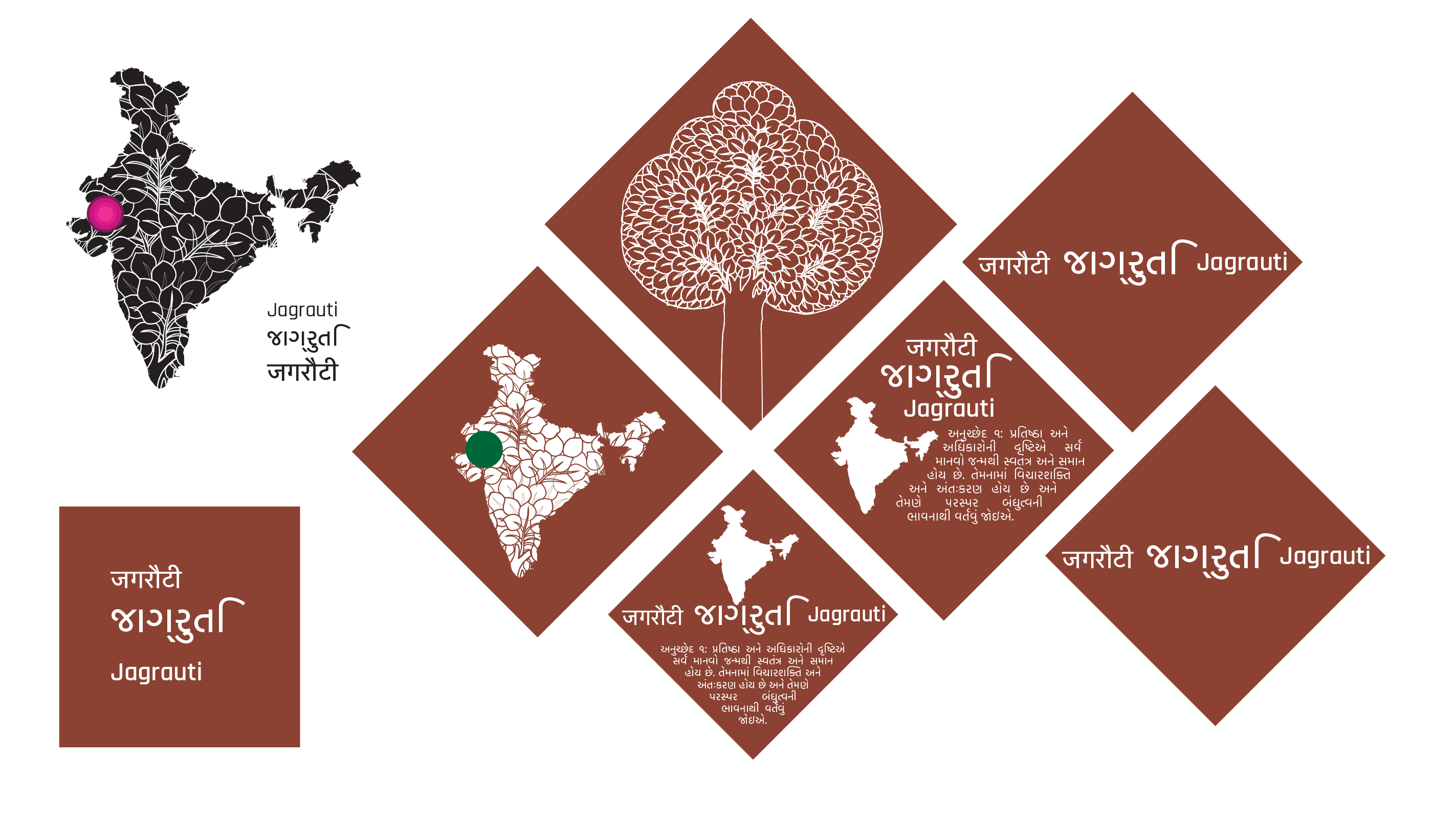
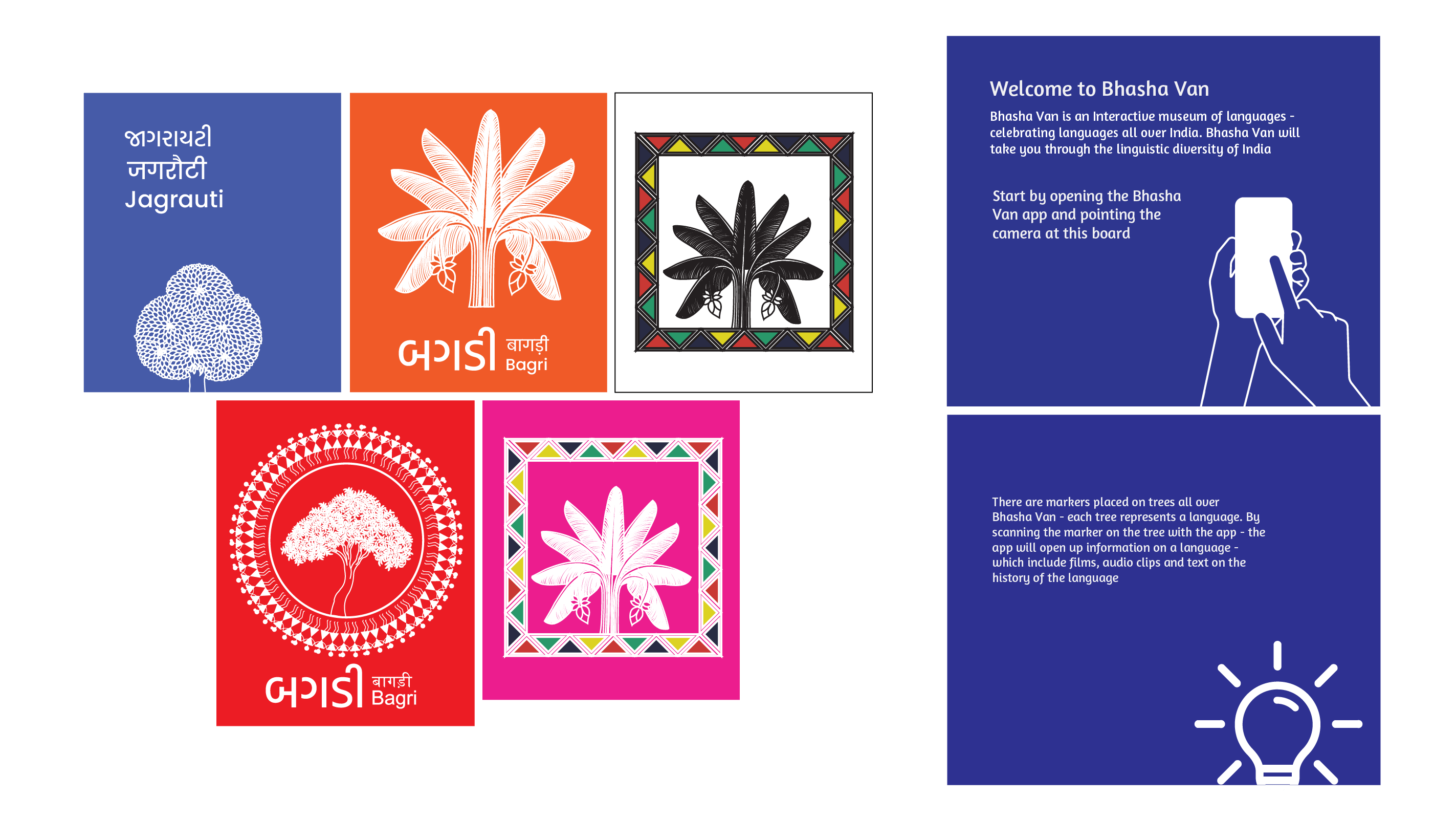
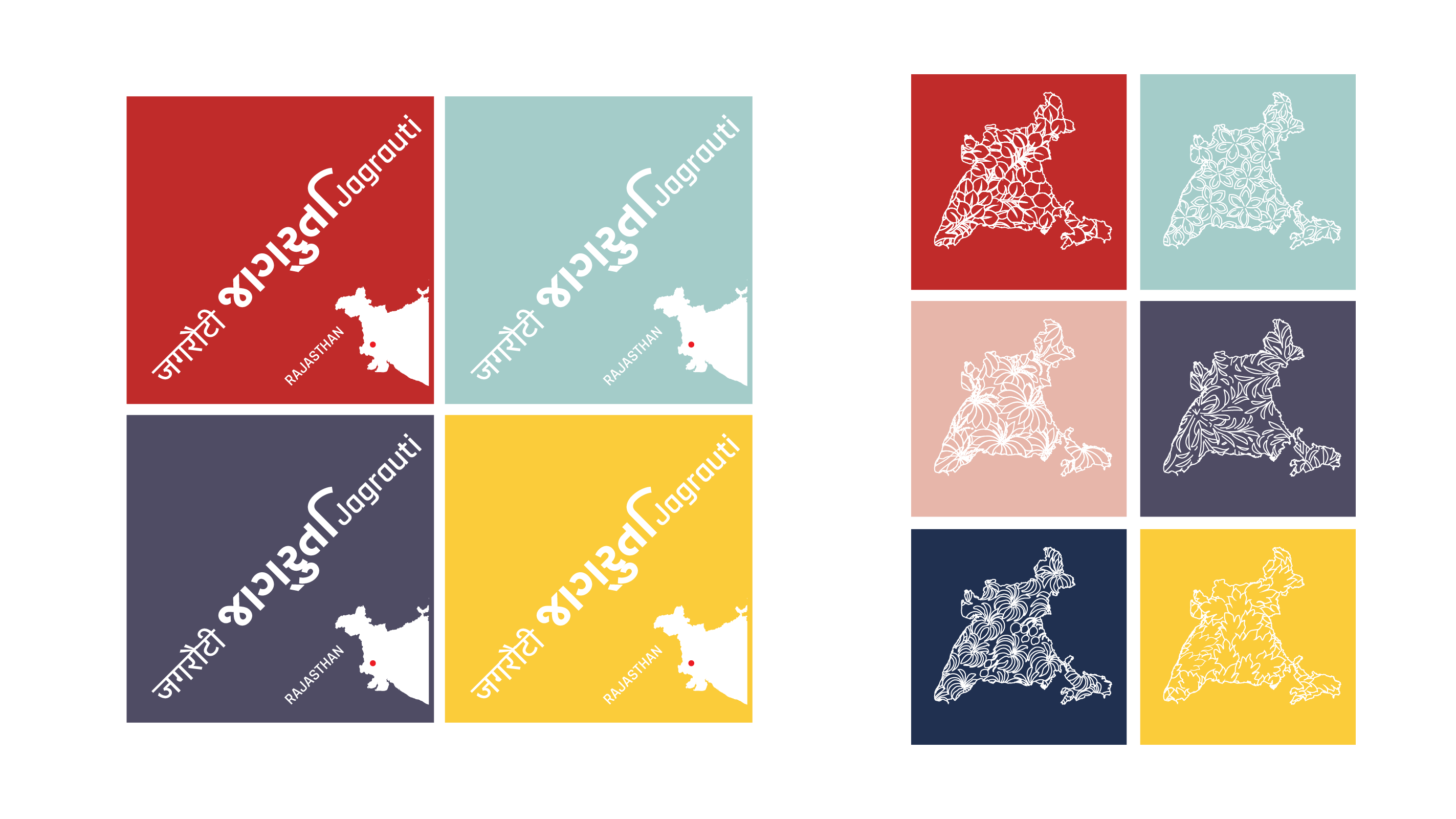
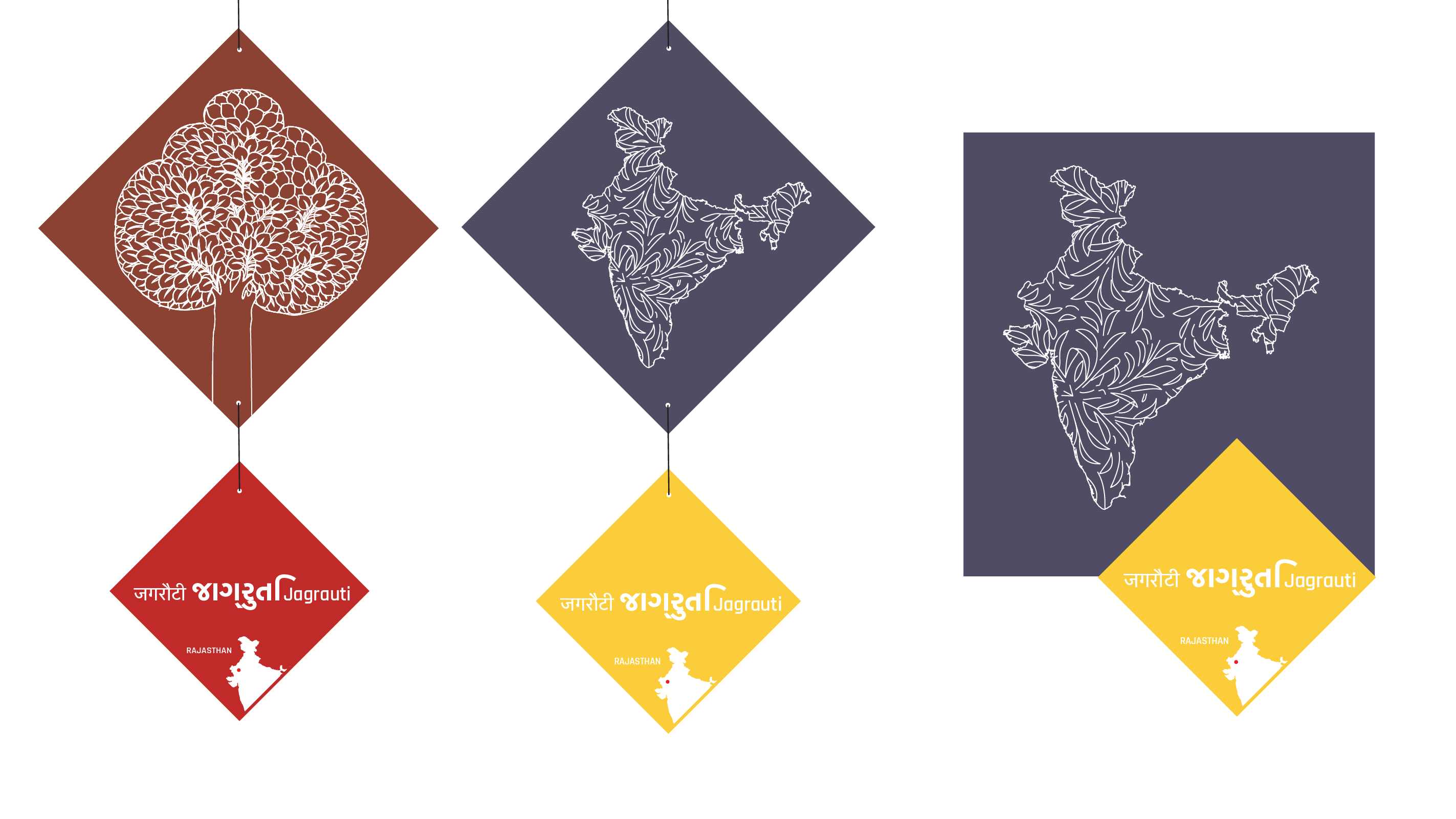
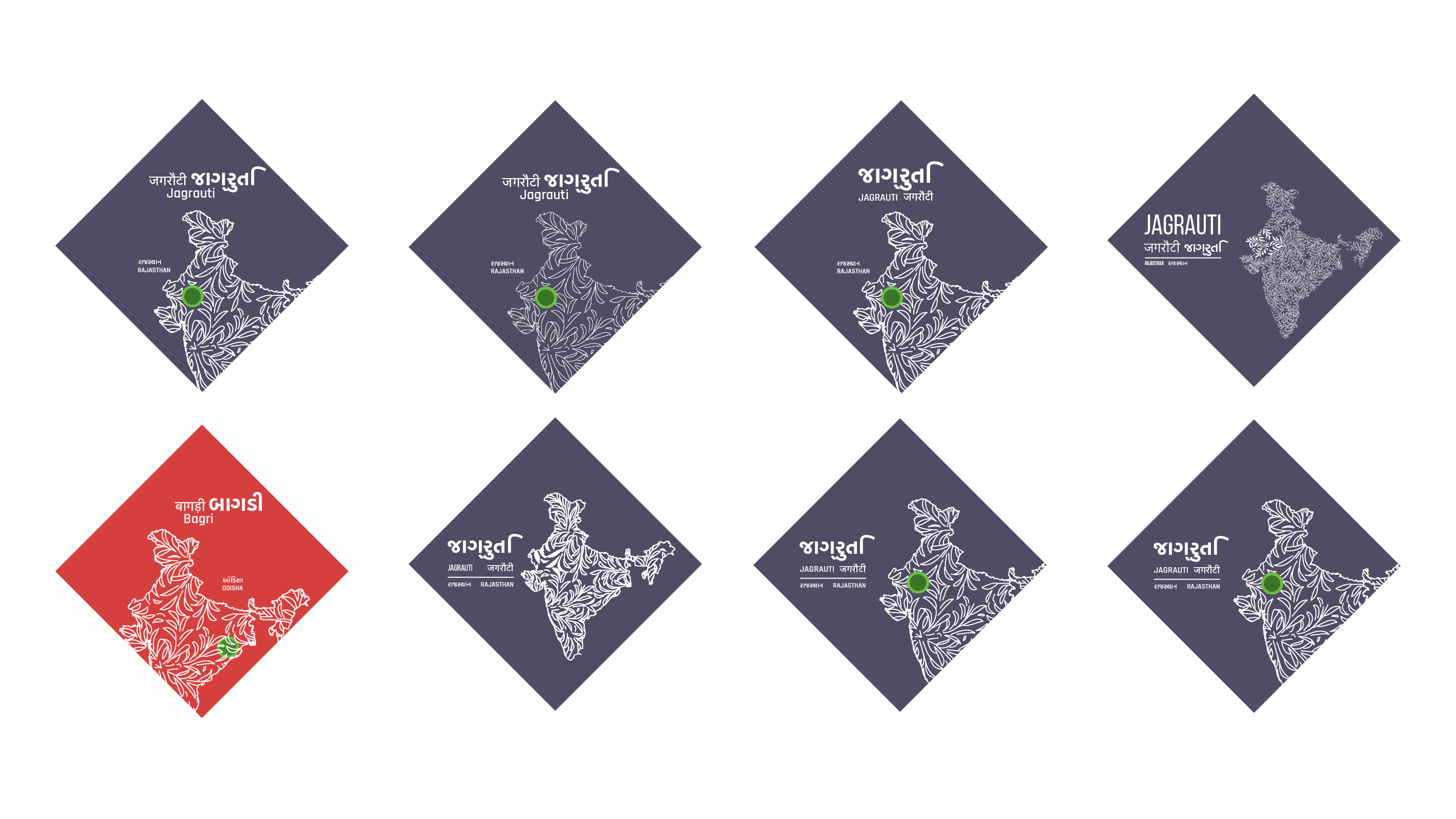
While other shapes were explored for the marker, it was kite festival, the first time I visited the academy. The festival had an important connection with the place. Kites everywhere - all kids playing with kites. This inspired the decision of making the marker into a rough kite shape - it had to be less obvious and more functional.
Introduction Board was also designed in a similar style

A glimpse of what the final marker images look like.

Final placement of the markers and introduction board in the campus

UI Design was the more complex part of the project. There was a lot of unstructured data available to Bhasha. Mostly in audio and video. There had to be a balance in the amount of content and type of content to be provided in the application.
Original prototype for the application was made in Unity with ARFoundation. Many other AR libraries were also tried including ARCore and ARKit - ultimately, unity was the best bet - it had the capability to port the application effortlessly to a different platform as well. This was working good until I figured out most devices don't support AR and most available android tablets under a budget of ₹30,000 did not have the support. The application was rebuilt again later on for iOS only, iPads were also purchased.

